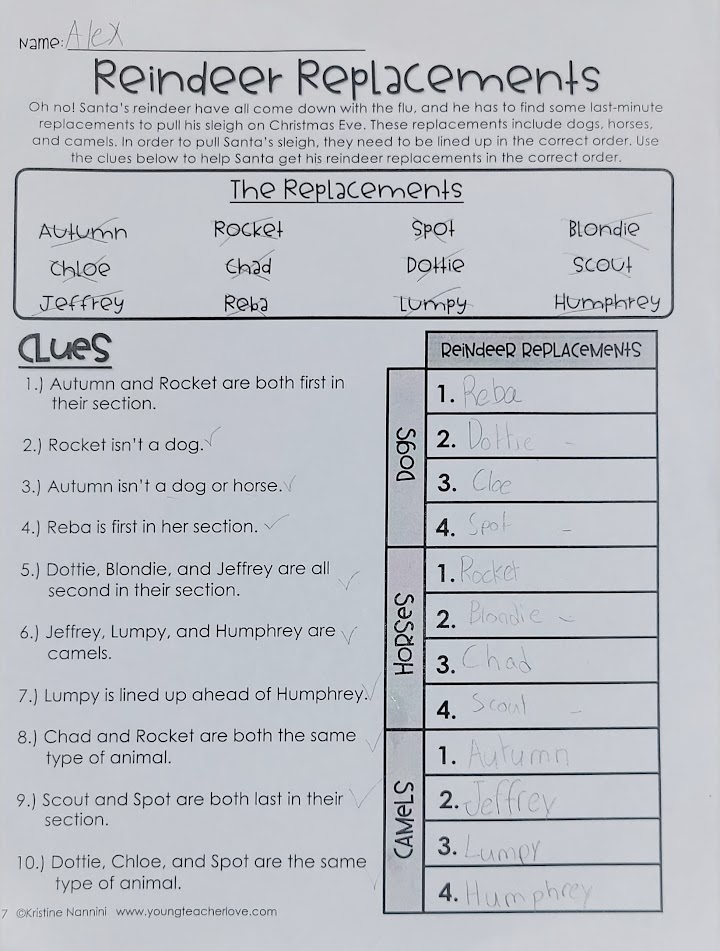Reindeer Replacements: Solving a children's logic puzzle with OR-Tools¶
2022-12-18
My daughter brought home this problem from school:
Oh no! Santa's reindeer have come down with the flu, and he has to find some last-minute replacements to pull his sleigh on Christmas Eve. These replacements include dogs, horses, and camels. In order to pull Santa's sleigh, they need to be lined up in the correct order. Use the clues below to help Santa get his reindeer replacements in the correct order.

This is a constraint satisfaction problem, and it is a nice opportunity to model a simple problem using sophisticated software. I have been interested in constraint solvers for quite a while. They feel magical and can solve very hard problems, yet they're little-known and seldom-used. I recently got started using Google OR-Tools and used it for a small project for an AI class where I tried to schedule CrossFit workouts.